Migrations: A field study of adversity
Guest blog by Derek Robertson
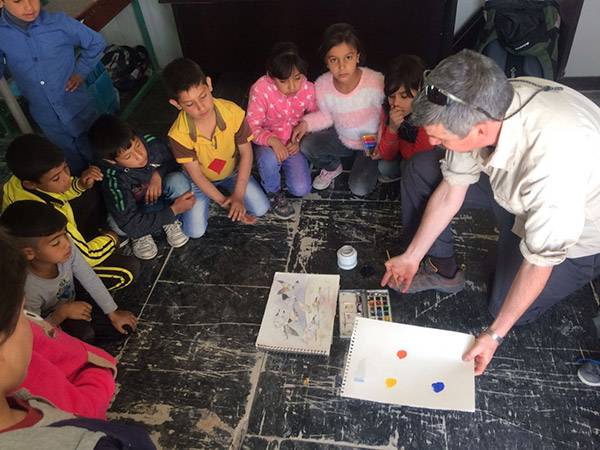
I am privileged to spend my days in wild and beautiful places painting birds. I am fascinated by them: by their abstract shapes, their song, their behaviour, their migrations. I have sketched them, and helped in scientific studies of their migratory journeys from the Arctic right down into Africa. Three years ago I watched as “The Summer of Boats” unfolded into a refugee crisis and I saw newscasters reporting from beaches on Mediterranean islands as desperate people came ashore. I recognised these islands as the same places I had travelled to watch and sketch migratory birds and now here were people in a similar state of immediate survival, taking the same lines of flight as the birds I portray.
Through the course of a year, I travelled through the UK and Europe, through the Mediterranean to the Middle East. On my travels I spoke to refugees, to locals and to volunteers and I sketched what I saw: the people, the places and the birds. One of the interests that ecologists have in birds is that they are important environmental indicators. If the populations or migration of the birds change, this points to change in the environment that could be of grave concern. The issues are complex, but academic studies draw a link between climate change, conflict and refugee crises – that cause further social and environmental stress. In these complex systems, ecologists look to the birds to indicate what might be happening to our world. They are telling us something we can now recognise for ourselves, and how we address the intertwined issues of climate change and refugee crises will define who we are and what societies we live in for generations to come.
I documented what I saw on my travels and expressed these interwoven topics through a series of paintings back in the studio, but often the stories I heard and the things I saw were difficult to express and too hard to portray. I often concentrated my attention on the details and the surface texture – the ephemera of the boats and camps and studies of the birds that I found there. The project challenged me artistically and personally and I often found myself very far outside my comfort zone. I taught art classes in refugee schools and organised art activities for unaccompanied children in some of the camps. I was mugged in Sicily, caught in a riot in Calais and escorted off sites by armed police and soldiers, but my experiences were matched by the inspirational humanity of the many refugees and volunteers that I met.
One of my most inspiring journeys was to Jordan in April when birds were migrating north. I spent time teaching art classes in a refugee school in Azraq and travelling with ecologists and with volunteers who were working with the refugees, and I spent some time travelling through the desert. We passed through oasis villages that had become dry because of the unsustainable extraction of water: a pressure that has only increased as Jordan’s population has doubled because of a series of refugee crises.
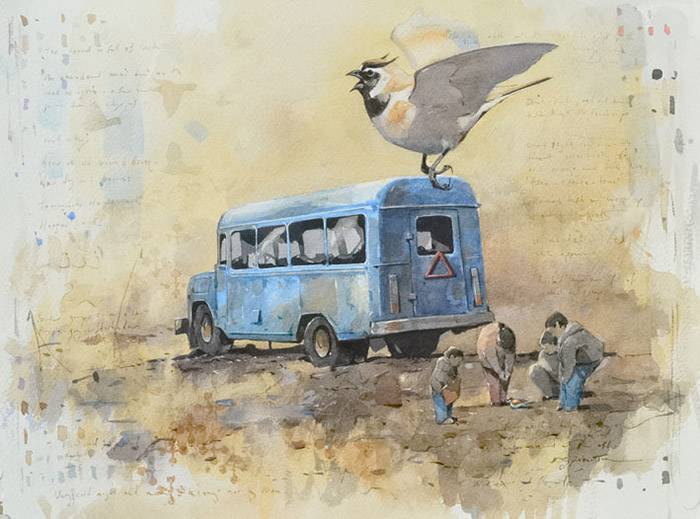
“The Desert is Full of Promises”. A watercolour study completed in Jordan. The horned larks manage to thrive in very dry desert. Migrating birds now struggle to cross desert areas where the oases have turned to desert. Water extraction has increased as the population doubled over the last few years because of the influx of refugees. ” We saw a small group of Bedouin children who had found a bee-eater. I think it had come down to the roof of the abandoned blue, bus thinking it was water. The children got a saucer of water and some cardboard boxes to make a little shade for the bird. It rested, drank some water, and recuperated enough to fly off.”
There is an Arabic saying which is “Do good and throw it in the river and you will be rewarded in the desert.”
There is an Arabic saying which is “Do good and throw it in the river and you will be rewarded in the desert.”
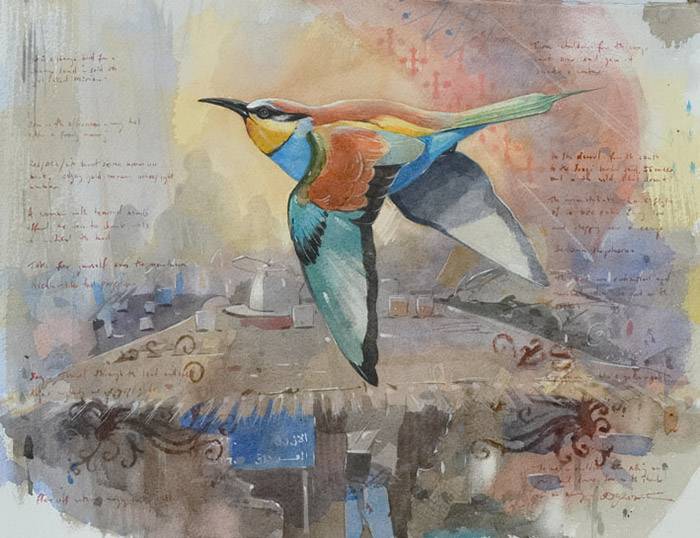
“For The Wayfarer That You Meet”. Field study completed in the Jordanian desert. Derek travelled through the desert with Jordanian biologists and ecologists who were monitoring changes in bird populations and observing how these indicated desertification and ecological change. “The generosity of the Jordanian people was overwhelming – both at a personal level and nationally, in giving shelter to millions of refugees.”
The painting incorporates some of the story of the “The Desert is Full Of Promises” with sketches from a number of picnic-stops in the desert to drink tea and eat. The studies refer to the courtesies and hospitalities exchanged between
guests and hosts.
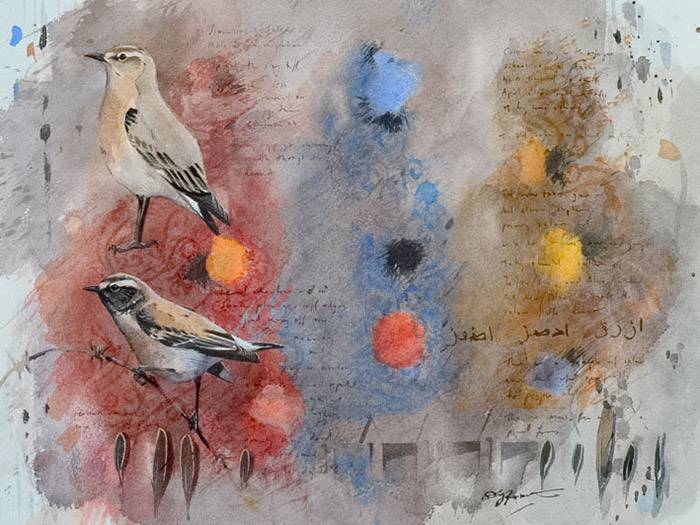
“What Colour Are The Wheatears”. A study painted in the desert over a colour mixing demonstration sheet. Derek held a series of art classes for schoolchildren at a refugee school in the desert where he talked about his artwork and the links between artwork, environment, animals and the people who live and work in the landscape. “The children called out the names of the colours for me in Arabic – which are scribbled into the sketches. Later that day, we drove through the desert and I sketched migratory and resident species of wheatears.”
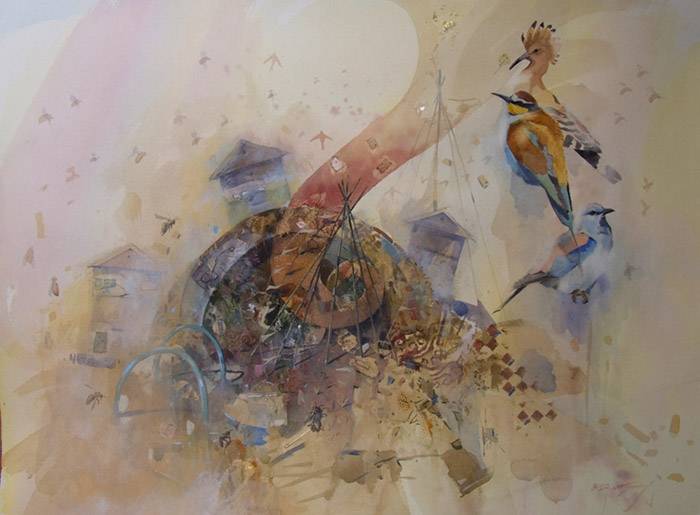
“The Gardens of The Desert”
Watercolour and collage. Inspired by visits to refugee camps, gardens and farms in the oasis villages of the desert in Jordan. “The hospitality of the Jordanian people was overwhelming. They were joyous, generous and welcoming in a way that continually impressed and surprised you.”
“What We Lost In The Desert”
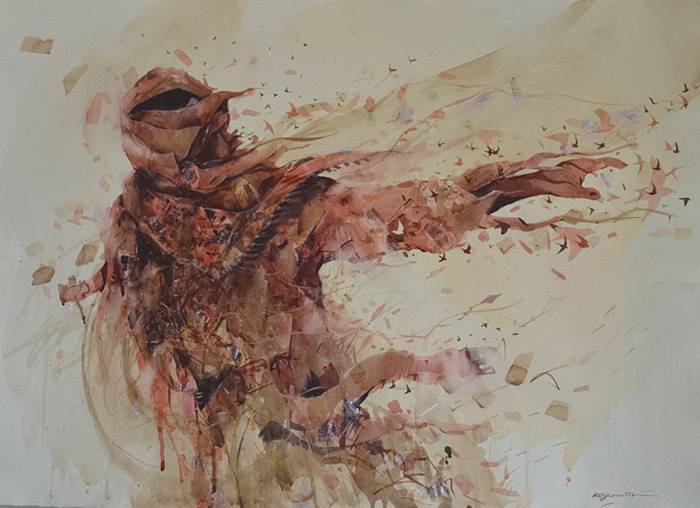
Watercolour and collage inspired by interviews with Syrian refugee families in Jordan. ” I met, ate and drank tea with people who had fled from their homes – sometimes with resources and their possessions, but often with nothing at all. I spoke to teachers, taxi drivers and even men who had served in the Syrian army. The tales I heard were inspiring, harrowing and unimaginable but these accounts were so often interspersed with laughter, games, singing and dancing. These were tales of loss, of lives put on hold, but the sense of determination, achievement and hope was disarming and inspiring.”
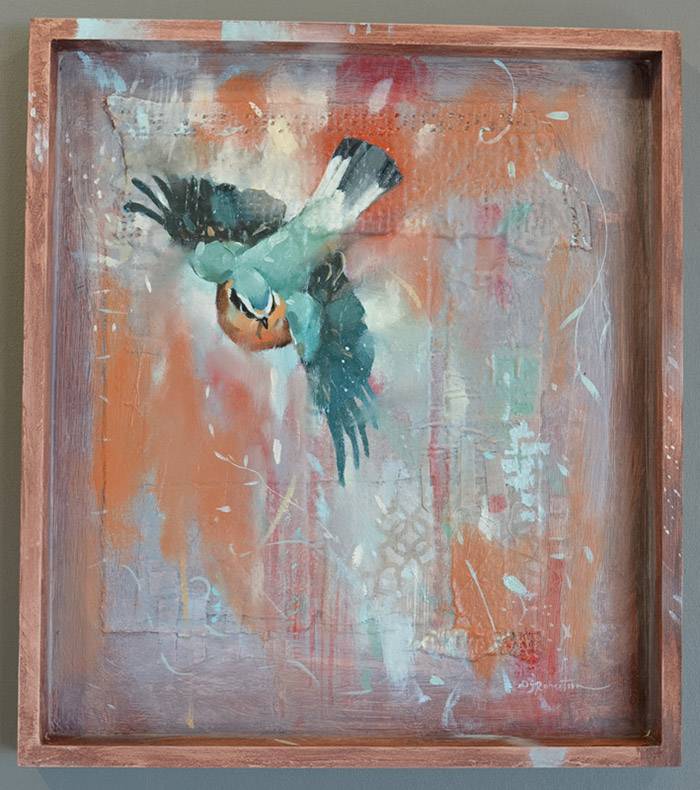
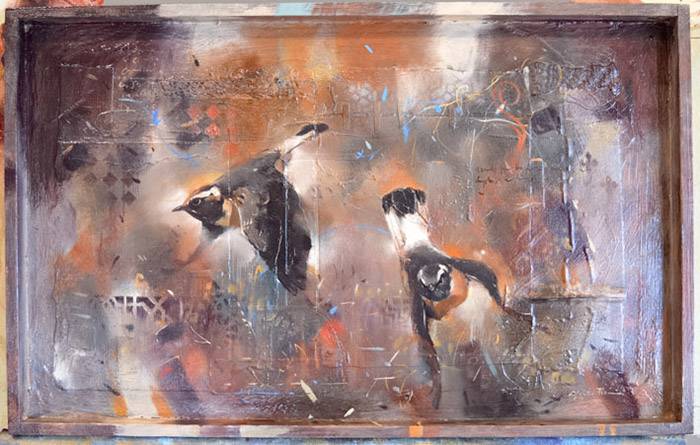
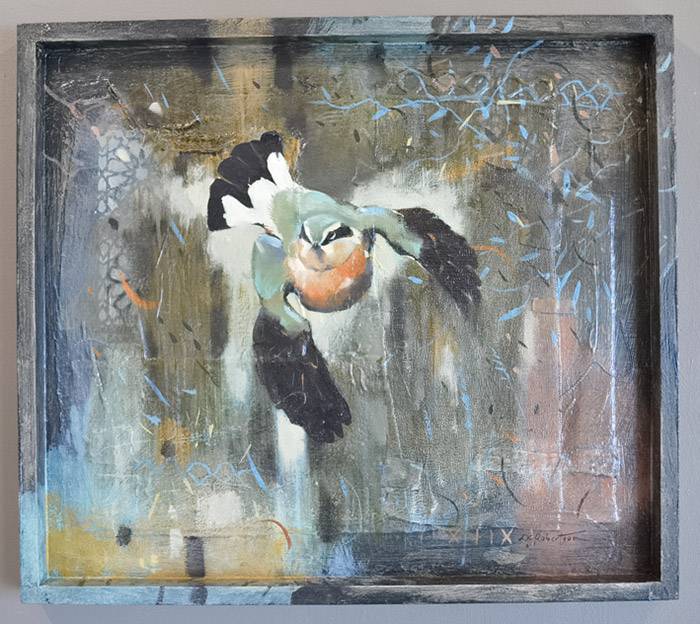
“Between The Refuge And The Fire”, “Refuge Box”, “The Narrow Way”. Assemblage boxes made from collage of wood, paper and fabric scavenged from discarded material around refugee camps and transit points in Calais, Jordan and Sicily.
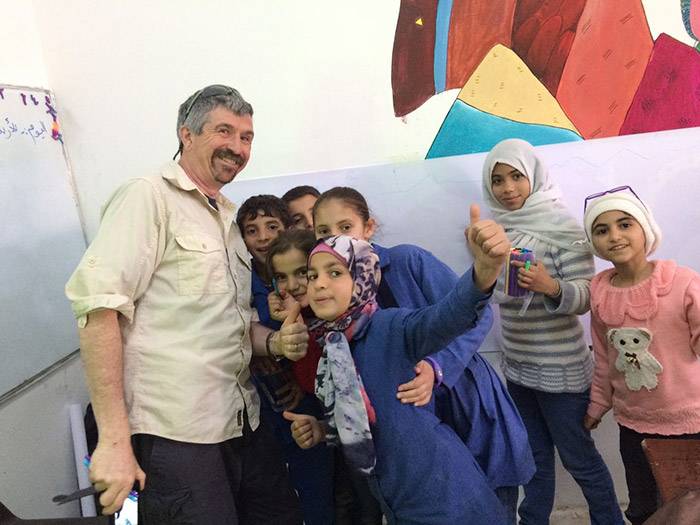
Derek Robertson was born and raised in Scotland and is a graduate of Duncan of Jordanstone Art College. To learn more about Derek and his work visit:
